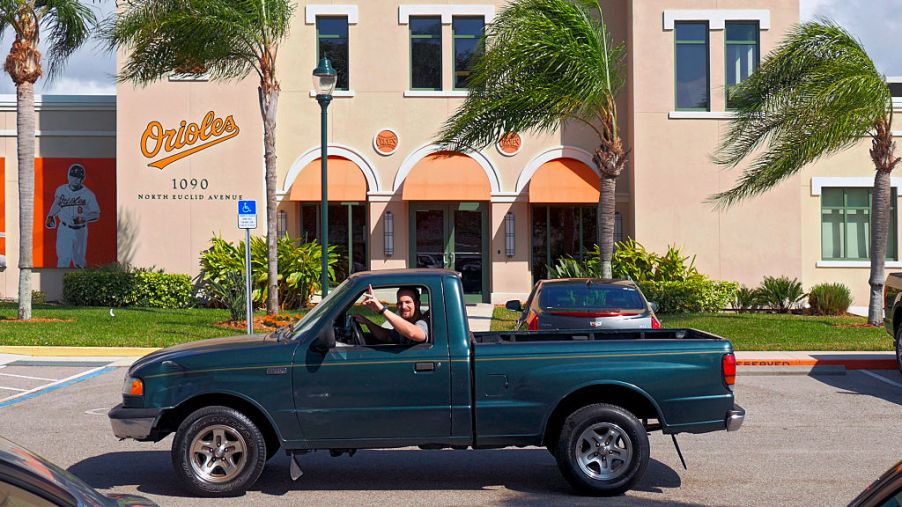
Mazda’s Discontinued B-Series Truck Lives on in a Weird Way
In today’s world, pickup trucks are more luxurious and spacious than ever before, and many families use them as their primary vehicle. It wasn’t all that long ago, however, that small, no-frills pickups were one of the most desirable vehicles around.
From the ’70s to the ’90s, basic four or six-cylinder compact pickups were extremely desirable as work trucks and daily commuters. Although you couldn’t generally fit more than one passenger in the cab, there was really no reason to; these small trucks got decent fuel economy, were built to be exceptionally durable, and had the ability to tow and haul. In other words, they did everything their larger counterparts could — but they were far more affordable and had a substantially smaller footprint.
One of the popular small trucks during the ’80s and ’90s was the Mazda B-Series. Sadly, it’s largely been forgotten about, along with other compact pickups like the Suzuki Equator and the Mitsubishi Mighty Max. Sure, it was a bit obscure within its segment, especially compared to worldwide favorites like the Toyota Tacoma, but it shared many popular traits with the Ford Ranger. So many, in fact, that although the long-forgotten Mazda truck was discontinued in 2009, it lives on through the Ranger today.
The origins of the Mazda B-Series truck
Mazda has a long history — 100 years long, in fact — of being a forward-thinking automaker that makes vehicles people love to drive. Its foray into pickup trucks began in Japan in 1931 with the three-wheeled Mazda-Go. After years of refinement and the addition of a fourth wheel, the B-Series Mazda truck was introduced in Japan in 1961.
At the time, and for the next couple of decades, small pickups were coveted workhorses used by everyone from business owners to government officials. It wasn’t until the ’70s that the B-Series truck was introduced to North America; first in 1970 in Canada, and then in the U.S. in 1972.
The Mazda B-Series trucks were affordable, fuel-efficient, and surprisingly utilitarian, according to AutoTrader. Mazda clearly valued function over form, but with an excellent result. For example, the 1988 Mazda B2200 had a 1,400-pound payload and could tow up to 1,000 pounds.
Certainly not earth-shattering, but quite impressive, considering its tiny footprint and the fact that this particular Mazda truck had an underwhelming 2.2-liter four-cylinder engine.
Really just re-badged Ford Ranger in the end
Mazda faced severe financial difficulty in the ’60s. According to U.S. News & World Report, Ford stepped in to help the company out of dire straits after initially teaming up in 1969 to design an automatic transmission together. Throughout the ’70s, Ford continued to increase its equity in Mazda and by 1979, it had 33.4% ownership.
Unsurprisingly, the Mazda B-Series trucks increasingly began to resemble Ford Courier trucks. For decades, the automakers worked closely on the development of their pint-sized pickups, using primarily Mazda transmissions with Ford parts. To make things even more confusing, Mazda actually built Couriers for Ford beginning in the late ’70s for the Australia and New Zealand markets.
After spending more than $100 million in redesigns from 1986-1993, Mazda introduced a re-badged Ford Ranger as the 1994 B-Series truck in order to cut costs. The trucks were truly one and the same: they were even produced by Ford at one of its plants in Minnesota, despite the fact that Ford Rangers were also actively being made. Consumer Reports stated plainly, “This compact pickup is a Ford Ranger with a Mazda nameplate and minor exterior differences.”
The B-Series lives on because the Ranger does
As Mazda continued to struggle financially, Ford got even more of an ownership stake and in 2009, the Mazda B-Series trucks were discontinued indefinitely. The Ford Ranger was also discontinued in the U.S. 2011, but it was brought back in 2018 and it’s rumored that it’s getting a major redesign for 2021.
It seems that, just for a time, people forgot how much there is to love about small pickup trucks. Although the Mazda trucks have been defunct for over a decade, one can only imagine that the present-day version would still bear a striking resemblance to its Ford sibling.


